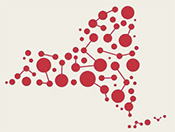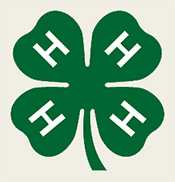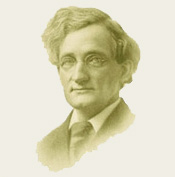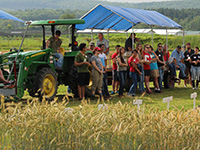Adapt these activities to the age, interest, and skill levels of your group.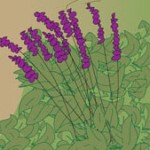
Basket Weaving (pdf)
Seed Jewelry Making(pdf)
Clothes Dyeing(pdf)
Connections to NYS Learning Standards
Activity: WEAVING WITH PLANTS
Health, Physical Education, and Home Economics
STANDARD 2 Students acquire knowledge and ability necessary to maintain a healthy environment. Students develop skills of cooperation and collaboration. Students work constructively with others to accomplish a goal in a group activity.
STANDARD 3 Students understand and manage personal and community resources. Students use recycled or found materials.
Mathematics, Science, and Technology
STANDARD 1 Students use mathematical analysis, scientific inquiry, and engineering design to pose questions and develop solutions.
STANDARD 2 Students access, generate, process, and transfer information using technologies Standard 3 Students understand math and become mathematically confident by communication and reasoning. Measurement skills.
STANDARD 4 Students understand and apply scientific concept, principles, and theories. Students learn suitable plant materials for weaving of compost bins.
STANDARD 5 Students apply technological knowledge and skills to design, construct, use, and evaluate products and systems to satisfy human and environmental needs. Engineering design is an iterative process involving modeling and optimization used to develop technological solutions.
STANDARD 6 Students understand and apply relationships and common themes that connect math, science, and technology. Students understand the interrelatedness of life on Earth.
STANDARD 7 Students apply knowledge and skills of math, science, and technology to address problems. Students learn how to improve their environment.
English Language Arts
STANDARD 1 Students listen, speak, read, and write for information and understanding. Students collect data, facts, and ideas, discovering relationships, concepts, and generalizations, and using knowledge from oral, written, and electronic sources. Online resources. Students make perceptive connections to prior knowledge.
The Arts
STANDARD 2 Students make use of materials and resources for participation in the arts. Weaving is the most ancient of arts.
STANDARD 3 Students will analyze visual characteristics of the natural environment and explain social, cultural, psychological, and environmental dimensions of the visual arts. Students respond critically to variety of works in the arts.
STANDARD 4 Students understand personal and cultural forces that shape artistic communications. Students explore concept of art made with nature.
Social Studies
STANDARD 2 Student demonstrate understanding major ideas, eras, themes from variety of perspectives. Students in their study of world history know the social and economics characteristics, such as customs, traditions, foods, etc. that distinguish different cultures and civilizations. Weaving and textile production has had significant presence in our language, customs, and literature since ancient times.
Activity: SEED JEWELRY MAKING
Health, Physical Education, and Home Economics
STANDARD 2 Students develop community approaches which enhance and protect the quality of the environment. Students evaluate seeds for use.
STANDARD 3 Students understand and manage personal and community resources.
Mathematics, Science and Technology
STANDARD 1 Students use mathematical analysis, scientific inquiry, and engineering design to pose questions and develop solutions.
STANDARD 2 Students access, generate, process, and transfer information using technologies Standard 3 Students understand math and become mathematically confident by communication and reasoning. Measure growth of plants STANDARD 4 Students understand and apply scientific concept, principles, and theories. Students grow, harvest, and make jewelry with Job’s tears.
STANDARD 5 Students apply technological knowledge and skills to design, construct, use, and evaluate products and systems to satisfy human and environmental needs. Engineering design is an iterative process involving modeling and optimization used to develop technological solutions.
STANDARD 6 Students understand and apply relationships and common themes that connect math, science, and technology.
STANDARD 7 Students apply knowledge and skills of math, science, and technology to address problems.
English Language Arts
STANDARD 1 Students listen, speak, read, and write for information and understanding. Students collect data, facts, and ideas, discovering relationships, concepts, and generalizations, and using knowledge from oral, written, and electronic sources. Online resources.
The Arts
STANDARD 2 Students make use of materials and resources for participation in the arts. Use of beans, corn, acorns, and grass seed for natural jewelry.
STANDARD 3 Students will analyze visual characteristics of the natural environment and explain social, cultural, psychological, and environmental dimensions of the visual arts. Students respond critically to variety of works in the arts.
STANDARD 4 Students understand personal and cultural forces that shape artistic communications. Students explore concept of art made with nature.
Social Studies
STANDARD 2 Student demonstrate understanding of major ideas, eras, themes from variety of perspectives. Students in their study of world history know the social and economics characteristics, such as customs, traditions, foods, etc. that distinguish different cultures and civilizations. Botanical jewelry has been around for thousands of years. Central American necklaces are made with grass seed called Job’s tears.
Activity: CLOTHES DYEING
Health, Physical Education, and Home Economics
STANDARD 2 Students acquire knowledge and ability necessary to maintain a healthy environment. Students develop skills of cooperation and collaboration. Students work constructively with others to accomplish a goal in a group activity. Students know and demonstrate practices necessary to insure safe conditions.
STANDARD 3 Students understand and manage personal and community resources. Students can use dozens of common plants, that can be harvested and made into dyes.
Mathematics, Science, and Technology
STANDARD 1 Students use mathematical analysis, scientific inquiry, and engineering design to pose questions and develop solutions.
STANDARD 2 Students access, generate, process, and transfer information using technologies.
STANDARD 3 Students understand math and become mathematically confident by communication and reasoning. Students assess findings and record results.
STANDARD 4 Students understand and apply scientific concepts, principles, and theories. Students compare and contrast the results of the three dyeing experiences. Students identify plants for their dye-color properties.
STANDARD 5 Students apply technological knowledge and skills to design, construct, use, and evaluate products.
STANDARD 6 Students understand and apply relationships and common themes that connect math, science, and technology. Students observe and describe interaction among components of simple systems and identify common things that can be considered to be systems.
STANDARD 7 Students apply knowledge and skills of math, science, and technology to address problems.
English Language Arts
STANDARD 1 Students listen, speak, read, and write for information and understanding. Students collect data, facts, and ideas, discovering relationships, concepts, and generalizations, and using knowledge from oral, written, and electronic sources. Online resources and books.
The Arts
STANDARD 2 Students make use of materials and resources for participation in the arts.
Students explore natural dye processes.
STANDARD 3 Students will analyze visual characteristics of the natural environment and explain social, cultural, psychological, and environmental dimensions of the visual arts. Students respond critically to variety of works in the arts.
STANDARD 4 Students understand personal and cultural forces that shape artistic communications. Students explore concept of art made with nature.
top

